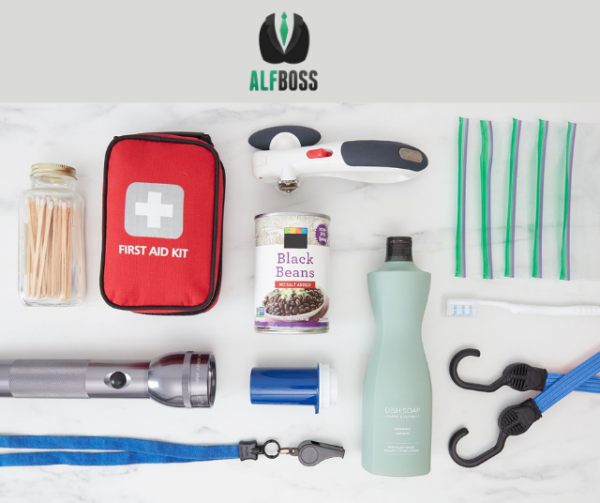
Building an emergency supply kit
Building a basic emergency supply kit is an extremely important factor in the quality of response to the emergency at hand. Because you will typically not know of the emergency in advance it is necessary to always have your supplies ready and located in many different locations. The state of Virginia DOSS has issued the following regulation as to what is required regarding your emergency equipment and supplies:
22VAC40-73-980. Emergency equipment and supplies.
- A complete first aid kit shall be on hand in each building at the facility, located in a designated place that is easily accessible to staff but not to residents. Items with expiration dates must not have dates that have already passed. The kit shall include the following items:
- Adhesive tape;
- Antiseptic wipes or ointment;
- Band-aids, in assorted sizes;
- Blankets, either disposable or other;
- Disposable single-use breathing barriers or shields for use with rescue breathing or CPR (e.g., CPR mask or other type);
- Cold pack;
- Disposable single-use waterproof gloves;
- Gauze pads and roller gauze, in assorted sizes;
- Hand cleaner (e.g., waterless hand sanitizer or antiseptic towelettes);
- Plastic bags;
- Scissors;
- Small flashlight and extra batteries;
- Thermometer;
- Triangular bandages;
- Tweezers; and
- The first aid instructional manual.
- In facilities that have a motor vehicle that is used to transport residents and in a motor vehicle used for a field trip, there shall be a first aid kit on the vehicle, located in a designated place that is accessible to staff but not residents that includes items as specified in subsection A of this section.
- First aid kits shall be checked at least monthly to ensure that all items are present and items with expiration dates are not past their expiration date.
- Each facility with six or more residents shall be equipped with a permanent connection able to connect to a temporary emergency electrical power source for the provision of electricity during an interruption of the normal electric power supply. The connection shall be of the size that is capable of providing power to required circuits when connected and that is sufficient to implement the emergency preparedness and response plan. The installation of a connection for temporary electric power shall be in compliance with the Virginia Uniform Statewide Building Code (13VAC5-63) and approved by the local building official. Permanent installations of emergency power systems shall be acceptable when installed in accordance with the Uniform Statewide Building Code and approved by the local building official.
- By December 1, 2020, the following provisions shall be met:
- A facility that is equipped with an on-site emergency generator shall test the generator monthly and maintain records of the tests.
- A facility that is not equipped with an on-site emergency generator shall have a temporary emergency electrical power source connection, which is tested at the time of installation and every two years thereafter by a contracted vendor, and maintain records of the tests.
- The following emergency lighting shall be available:
- Flashlights or battery lanterns for general use.
- One flashlight or battery lantern for each employee directly responsible for resident care who is on duty between 5 p.m. and 7 a.m.
- One flashlight or battery lantern for each bedroom used by residents and for the living and dining area unless there is a provision for emergency lighting in the adjoining hallways.
- The use of open flame lighting is prohibited.
- There shall be two forms of communication for use in an emergency.
- The facility shall ensure the availability of a 96-hour supply of emergency food and drinking water. At least 48 hours of the supply must be on site at any given time, of which the facility’s rotating stock may be used.
Top Takeaways:
- First aid kits shall be checked at least monthly to ensure that all items are present and items with expiration dates are not past their expiration date.
Conduct an inventory on your supply kits in every location in which one is kept. You can never be sure if supplies had been used after building the kit and not available in the event of an emergency.
- A facility that is equipped with an on-site emergency generator shall test the generator monthly and maintain records of the tests
You do not want to be in a situation where the facility generator is needed, and you cannot get it to operate. Conducting monthly tests will avoid any potential issues. Be sure to document these trials and keep with your emergency plan.